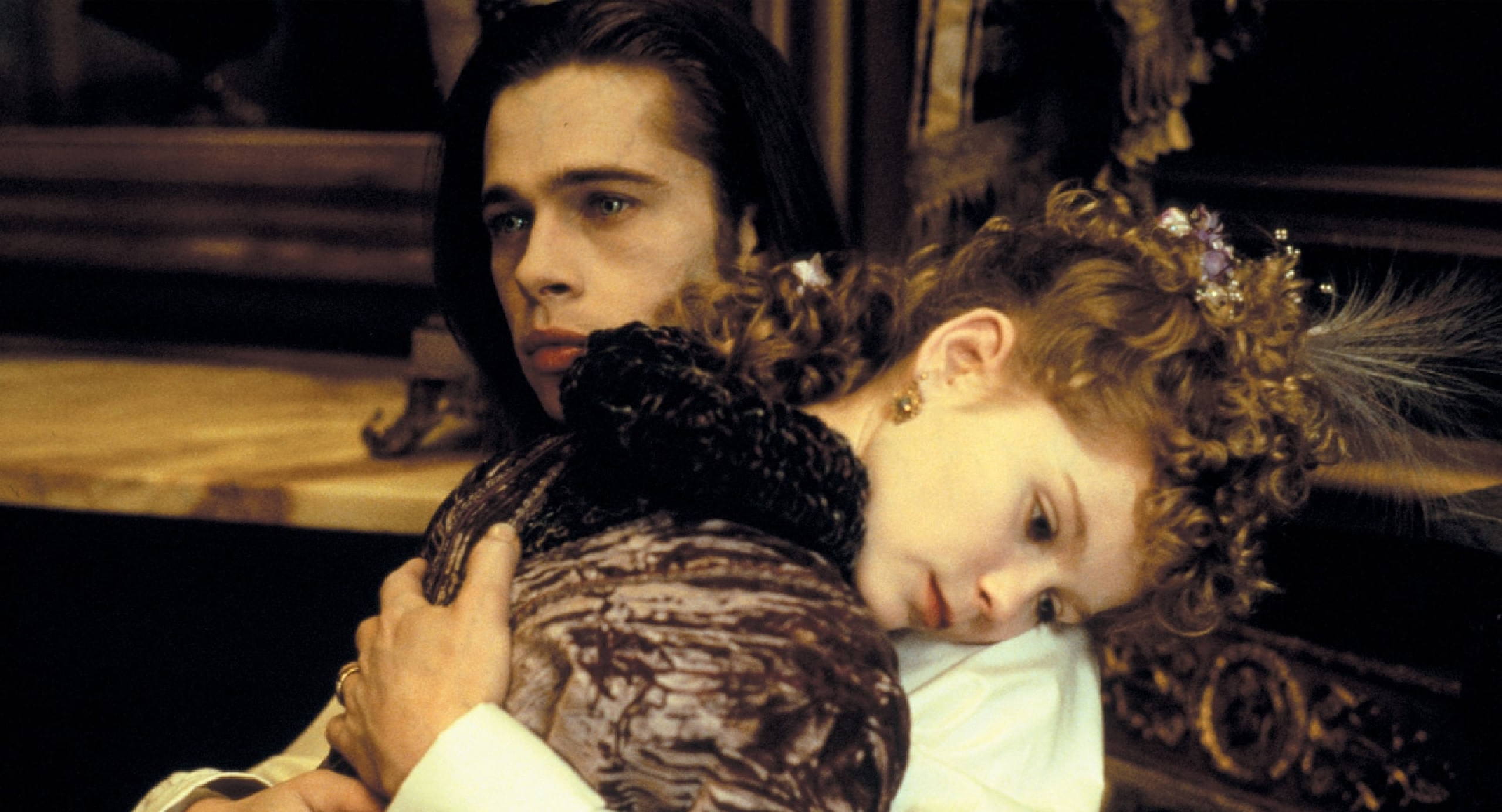Interview with the Vampire – Film Review
Published August 28, 2023

Born as an 18th-century lord, Louis is now a bicentennial vampire, telling his story to an eager biographer. Suicidal after the death of his family, he meets Lestat, a vampire who persuades him to choose immortality over death and become his companion. Eventually, gentle Louis resolves to leave his violent maker, but Lestat guilts him into staying by turning a young girl — whose addition to the “family” breeds even more conflict.
Interview with the Vampire, directed by Neil Jordan, is an opulent and haunting cinematic adaptation of Anne Rice’s best-selling novel of the same name. Released in 1994, the film presents a richly textured exploration of immortality, loss, and the complexities of eternal life. With its lavish production design, evocative cinematography, and exceptional performances, Interview with the Vampire crafts a somber yet mesmerizing narrative that delves deep into the psyche of vampires and their intimate struggles.
The story is framed as an interview between Louis de Pointe du Lac (played by Brad Pitt) and an eager journalist, Daniel Molloy (played by Christian Slater), in contemporary San Francisco. Louis recounts his life story, beginning with his transformation into a vampire in 1791 by the enigmatic and charismatic Lestat de Lioncourt (played by Tom Cruise).
As the two vampires navigate the centuries together, their differing views on the nature of their existence create a rift. Louis grapples with his conscience and his desire to maintain his humanity, while Lestat revels in their vampiric abilities. This central conflict sets the stage for a journey that spans multiple continents and epochs, exploring themes of love, desire, power, and the price of immortality.
Neil Jordan masterfully captures the essence of Anne Rice’s gothic universe with his meticulous attention to detail and lush visual style. The film is a chiaroscuro masterpiece, contrasting shadow and light to mirror the dual nature of its characters. Philippe Rousselot’s cinematography creates an almost painterly quality to the frames, immersing the audience in a world both ethereal and visceral.
The production design, led by Dante Ferretti, brings to life a meticulously reconstructed 18th-century New Orleans, complete with opulent ballrooms and dimly lit alleyways. The vampire coven’s sumptuous Parisian abode is an enchanting blend of grandeur and decay, serving as a reflection of their own immortal lives.
The casting of Interview with the Vampire raised eyebrows upon announcement, but the performances are nothing short of extraordinary. Brad Pitt’s portrayal of Louis is a symphony of vulnerability and longing. He captures the torment of a man caught between his desire for the human experience and the immortality thrust upon him. Tom Cruise delivers a captivating performance as the mercurial Lestat, capturing the character’s charisma and cruelty with equal intensity. The chemistry between Pitt and Cruise is the film’s driving force, propelling their complex dynamic.
Kirsten Dunst, in her breakout role as Claudia, a child vampire created by Lestat, delivers an astonishing performance. She navigates Claudia’s tragic existence with a maturity beyond her years, portraying the anguish of a trapped soul in an eternally youthful body. The interactions between Louis, Lestat, and Claudia form a deeply affecting familial bond that tugs at the heartstrings.
Antonio Banderas makes a late but memorable entry as Armand, a charismatic vampire leader in 19th-century Paris. His presence injects an air of mystery and sensuality, adding another layer to the already intricate narrative.
Interview with the Vampire is at its core an exploration of immortality and the timeless struggle to retain one’s humanity. The film delves into the philosophical implications of living forever and the emotional toll it takes on those who must watch the world change around them. Louis serves as the embodiment of the tortured vampire, torn between the desire for connection and the inevitable isolation that comes with his condition.
The film’s exploration of sexuality is also notable. It tastefully addresses the sensual aspects of vampirism without devolving into gratuitousness, using these moments to underscore the characters’ complexity and desires.
Elliot Goldenthal‘s haunting musical score is an integral part of the film’s atmosphere. The score weaves a melancholic and seductive soundscape that amplifies the emotional depth of the narrative. The use of classical compositions adds an air of timelessness, while original compositions imbue the film with a modern edge.
Interview with the Vampire stands as a testament to the power of adaptation when executed with care and artistry. Neil Jordan’s directorial vision, coupled with outstanding performances and a richly textured world, makes for a mesmerizing cinematic experience. The film’s exploration of immortality, longing, and the complexity of relationships is a dark and captivating tapestry that continues to enthral audiences, inviting them to question the nature of life, death, and the eternal in a world that is as beautiful as it is haunting.
